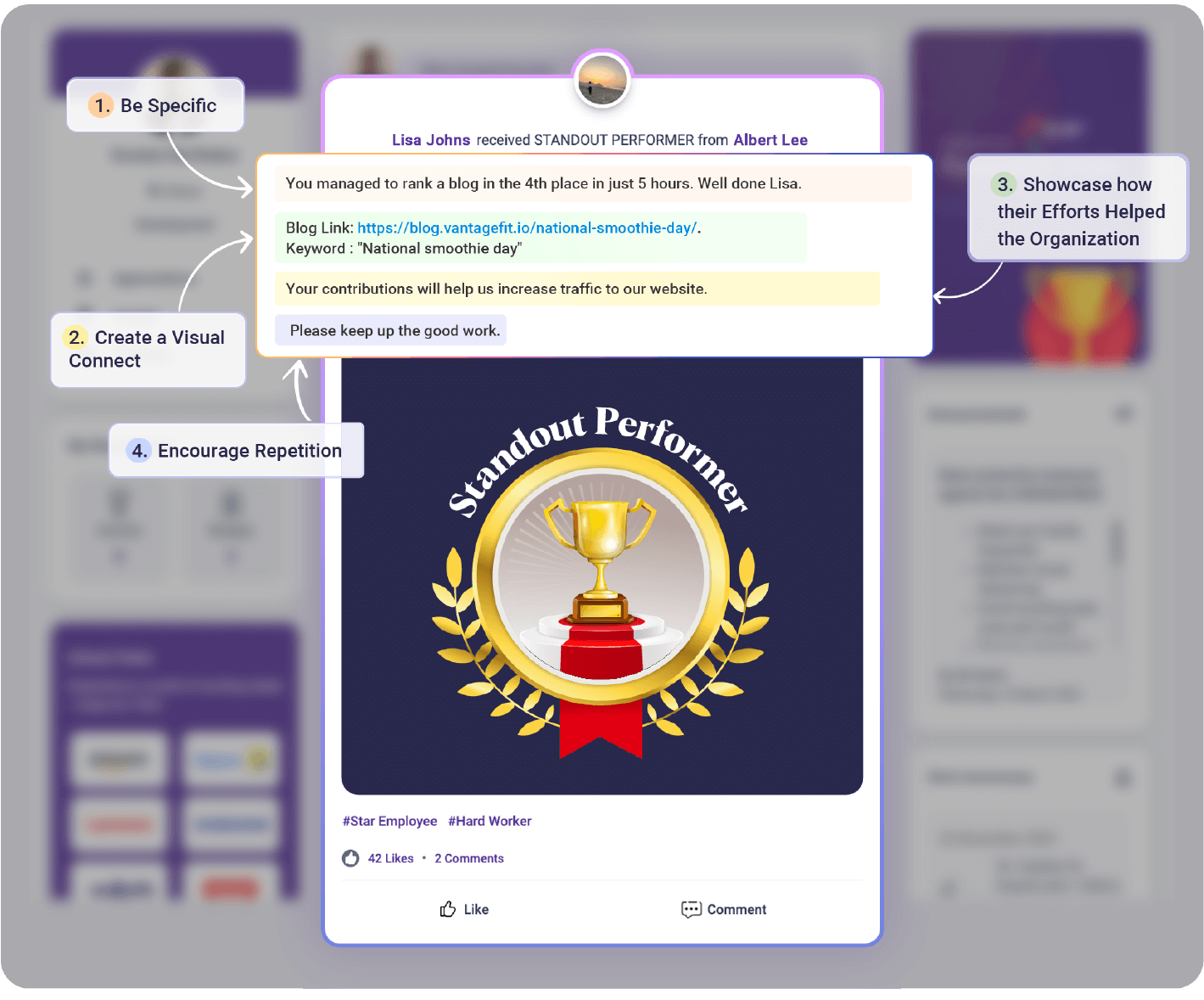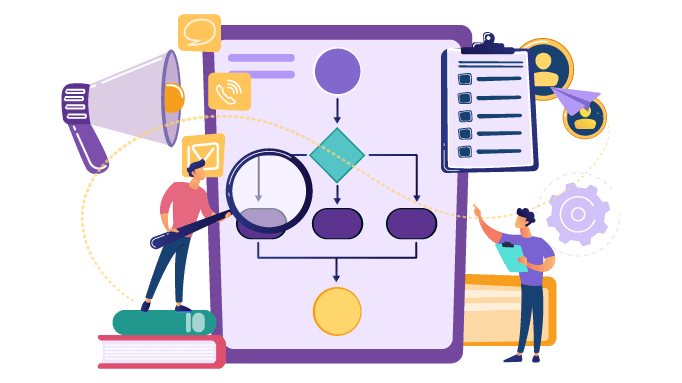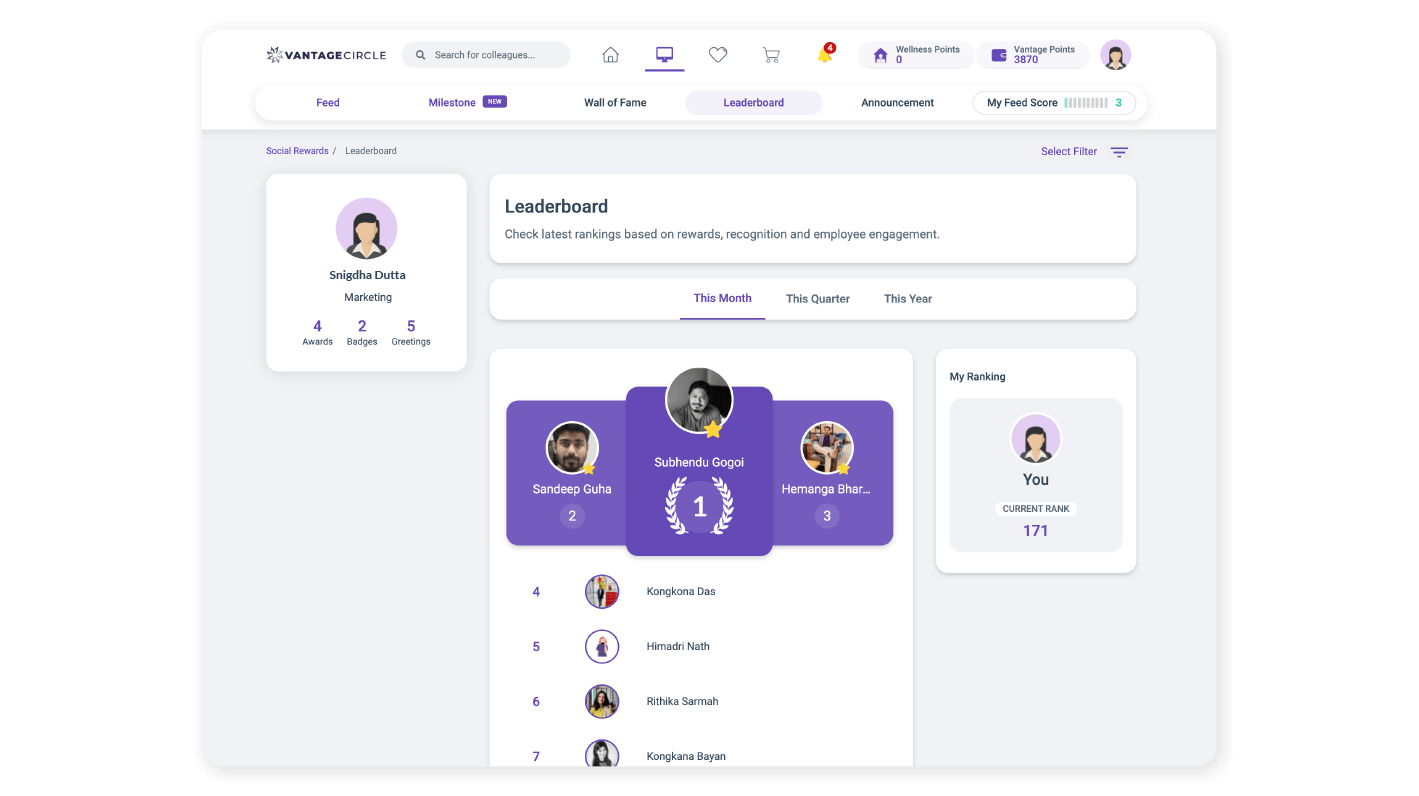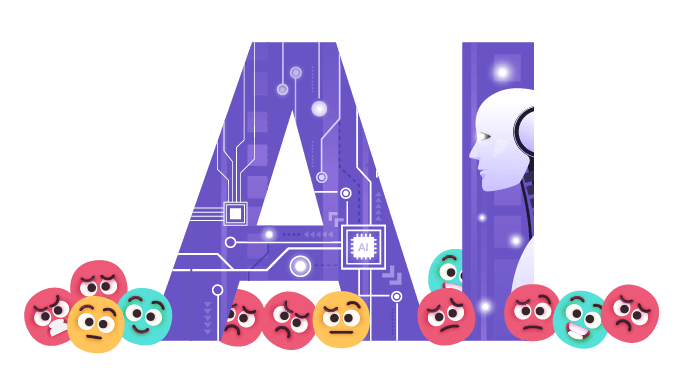Using Technology to Enhance Leadership-Driven Recognition Programs

A Global Employee Recognition and Wellness Platform

Key Takeaways
- The New Age of Personalized Recognition.
- How you can bridge the gap betweeen distributed teams and enhance transparency and fairness.
- Building a Recognition Ecosystem with Integrations and Gamification and Interactive Recognition.
- The Future of Recognition and How AI will play a crucial Role.
The landscape of employee recognition, in recent years, has undergone a significant transformation. This is primarily driven by the advent of advanced Recognition and Reward (R&R) platforms. Initially developed to streamline processes and automate the logistics of reward distribution, these platforms have come a long way. It has now gone beyond reducing administrative burdens to fostering a culture of recognition to cater to the workforce's diverse needs. With newer technologies in the recognition picture, these platforms enable an organization to leverage the power of recognition more effectively, by-
- Enhancing coverage across the employee base through broad-based recognition - Spot Awards, Peer-to-peer appreciations, Celebratory recognition (birthdays, work anniversaries)

(Source: Vantage Recognition)
-
Enabling timely recognition - regardless of location and time of day
-
Providing relational awards that are less transactional and more enduring than cash bonuses
Moreover, the integration of social recognition features has transformed recognition from a top-down process into a dynamic, community-driven experience, amplifying the positive effects across the workforce.
This shift marks a new era in employee recognition, where technology is not just a tool for efficiency but a powerful enabler of a more inclusive and celebratory workplace culture.
1. The New Age of Personalized Recognition

A one-size-fits-all approach to employee recognition does not fulfill the needs of the present era. It needs to have a personal and meaningful touch that reflects their contribution and unique personalities. This calls for personalized recognition, which is part of a successful leadership-enabled program.
And what are the things that you need to consider? It includes two most prominent things which are-
- Data-Driven Personalization
The dawn of sophisticated technology has enabled leaders to elevate recognition into a more personalized experience. This is only possible if a leader can leverage the existing data. R&R platforms can now analyze employee behaviors, achievements, etc., which allows leaders to tailor recognition efforts to everyone. Whether an employee prefers public praise or private acknowledgment, technology ensures that recognition aligns with their values and motivations. This approach helps in personalizing their overall experience and helps them feel valued, seen, and further inspire to contribute their best.
- Behavior and Recognition
Over 60% of the companies are looking at combination of results and behaviours while determining who gets recognized. (Source: Report on R&R trends by AON, SHRM and Vantage Circle)
Having a good understanding between behavior and reinforcement is crucial for effective recognition. The main fundamental is consistent acknowledgment of desired behaviors encouraging employees to repeat them. An approach like that aligns with the principle of operant conditioning, where positive reinforcement shapes behaviors by rewarding actions that contribute to the goals. This might not seem very easy, but technology enhances and simplifies this process. R&R platforms automate the tracking of employee achievements which prompts leaders to deliver timely and appropriate recognition. This emphasis on rewarding rather than punishing fosters a positive and motivating atmosphere. Such a framework becomes a strategic approach for shaping desired behaviors that drive organizational success. It also works in leading to sustainable employee engagement where productivity is prevalent.
2. Bridging the Gap Between Distributed Teams

The modern workplace as we know comprises distributed teams, with employees spread across different locations and time zones.
This has brought new challenges in maintaining cohesive team dynamics and ensuring that the workforce feels connected. As organizations adapt to this change, the role of recognition has become even more critical in bridging the gap.
- Digital Platforms for Instant Recognition
“Adapting our R&R strategies to accommodate the evolving workforce demographics, particularly the entry of Gen Z, has been key. The fundamental desire for recognition transcends generational divides, yet the way recognition is communicated and celebrated has shifted. The transition towards digital platforms and the inclusion of meaningful rewards, both personal and familial, highlight our commitment to personalization and emotional engagement.” - Lokendra Sethi, VP - HR, DXC (Source: Report on R&R trends by AON, SHRM and Vantage Circle)
The rise of cloud-based recognition platforms has revolutionized how leaders acknowledge and reward their teams. It enables instant recognition, allowing leaders to celebrate them as they happen despite geographical distribution.
The crucial factor being its accessibility that makes recognition feel immediate and impactful. This capability of timely acknowledgment helps reinforce the connection between effort and reward, especially when you have a distributed work environment.
However, what has been the critical factor that has led to a significant rise in digital platforms?
It is the advent of advanced technology that has optimized the modern-age recognition platforms. They can bring distributed teams together with their plethora of features. The end idea is to make everyone feel included and valued. By leveraging these technological innovations, organizations can ensure that recognition becomes the base of connection between distributed teams.
The ability to deliver recognition that feels personal and immediate will be key to maintaining a strong, cohesive organizational culture.
3. Enhancing Transparency and Fairness

The reliance on technology has increased significantly, especially when it comes to driving recognition programs. But in between all that, ensuring transparency and fairness is a greater challenge. It becomes a critical aspect that leaders must take care of. The effectiveness of these programs hinges on the ability of leaders to use technology thoughtfully and consistently. This makes recognition an equitable experience for all the employees.
But what are the things that will help in achieving the goal of fairness and transparency? Well, to do that, you need to constantly use recognition platforms and cover the grey patches. However, a head start in that aspect never hurts right? So below are a few areas that you can cover-
-
Training Leaders to Use Technology in Recognition- Equipping leaders with the appropriate skills and knowledge to use tools effectively.
-
Feedback Loops and Continuous Improvement- Integrating technology into recognition programs enables to establish feedback loops which can provide leaders with real-time data on how their recognition efforts are received by the employees.
-
Establish Clear Recognition Criteria- Establish clear criteria for recognition to ensure all employees understand what behaviors or achievements are rewarded. This reduces ambiguity and potential bias.
-
Regular Audits of Recognition Programs- Conduct regular audits to identify any disparities or shortcomings in how recognition is distributed. This ensures that all employees have equal opportunities to get recognition.
-
Peer Review in Recognition Decisions- Introduce a peer review component in the recognition process, where teams can nominate or endorse colleagues for recognition. This adds a layer of fairness by involving multiple perspectives in the decision-making process.
Read more: Empower the Workforce With A Culture of Peer-to-Peer Recognition
4. Building a Recognition Ecosystem with Integrations

Creating a robust recognition program in today's digital workplace involves building an ecosystem that seamlessly integrates with the tools employees and leaders already use. The ability to integrate with the existing tools makes the process natural, visible, and effective.
Below are some unique pointers towards building a recognition ecosystem with integrations:
1. Seamless Integration with HR Systems: A recognition platform should be able to integrate with existing HR systems. This enables automatic updates of employee milestones, anniversaries, and performance data that trigger timely recognition events without manual intervention.
2. Integration with Learning Management Systems (LMS): Integrating recognition programs with LMS systems ensures that employees are acknowledged not only for their job performance but also for completing training modules or learning new skills. This approach promotes continual learning and development, reinforcing the importance of growth alongside performance.
3. Cross-Departmental Recognition Visibility: Within the recognition platform you can develop features that allow recognition to be visible across different departments. It can include things like shared recognition boards, interdepartmental recognition channels etc. The idea is to foster a collaborative environment where peers can acknowledge each other for their contributions to broader goals.
4. Customizable Integration with Communication Tools: Enable the flexibility to customize how recognition is delivered through communication channels like Slack or Microsoft teams. Tailor notifications, announcements, and praise to fit the unique culture that will make it engaging for the workforce.
5. Real-Time Analytics and Insights: Integrate advanced analytics that provide real-time insights into recognition patterns. This will help leaders identify gaps, trends, and areas for improvement to ensure a balanced and fair recognition ecosystem across the organization.
6. Integration with Wellness and Engagement Platforms: Connect recognition programs with wellness and engagement platforms to reward employees for participating in health initiatives, team challenges, or community events. This promotes overall well-being alongside professional achievements while incentivizing their efforts.
5. Gamification and Interactive Recognition

With the right gamification features, leadership may expect a 50% increase in worker productivity and a 60% increase in employee engagement. (Source)
Incorporating elements of gamification into recognition programs has proven to be an effective way to boost engagement and motivation among employees. It makes recognition more interactive and visually appealing, creating a dynamic recognition environment. These little details allow employees to acknowledge their peers with enhanced user experience.
A few of the gamification elements that works far better include -
1. Achievement Badges and Levels: You can implement a system of digital badges and levels that employees can earn for various achievements. The accomplishments can come in different forms like completing projects, collaborating with peers, or consistently demonstrating company values. These badges can be used and displayed on employee profiles or within the recognition platform. In the long run, it encourages peers to do better and fosters friendly competition.
2. Recognition Quests: Create "quests" or challenges within the recognition platform that employees can embark on individually or as teams. Completing these quests, such as innovation projects, earns them points or rewards. This gamifies the recognition process and helps in increased engagement in the platform.
3. Interactive Recognition Leaderboards: Ask your vendor to develop live leaderboards that track and display the employees with the most recognition. Also have the flexibility to customize them to reflect different categories like innovation, teamwork, or customer service. This will encourage the employees to do better and climb the ranks on the leaderboard.

(Source: Vantage Recognition)
4. Recognition Streaks: One excellent idea is to introduce recognition streaks where employees are encouraged to give or receive recognition consistently. Incentivize such streaks where it unlocks special rewards or perks, promoting ongoing engagement in the recognition process.
5. Team-Based Recognition Competitions: You can organize team-based competitions where departments compete to achieve the most recognition. This improves the collaborative effort where the winners are featured in company-wide celebrations. Ensure this idea fits well with the technological aspect of using a recognition platform. This will increase the visibility of the recognition and open endless flexibility for recognizing the teams.
6. Virtual Recognition Events with Gamified Elements: Host virtual recognition events where employees can participate in gamified activities, such as trivia or recognition-themed games. Make sure that you incentivize them as it adds a fun and interactive layer. This enables the distributed teams to be a part of the recognition program and feel included in the work culture.
6. The Future of Recognition: AI-Powered Insights and Emotional Intelligence

1. Emotion AI in Recognition
Emotion AI, also known as emotion-sensing technology, represents an area of future technological advancement. At its core, this technology focuses on the analysis of facial expressions, vocal tone, and various emotional cues, aiming to offer insights into the effects of recognition on employees. By leveraging this data, leaders can refine their recognition strategies, augmenting the program's overall efficacy.
2. Predictive Recognition Strategies
The introduction of Artificial Intelligence (AI) has significantly altered our perceptions of numerous aspects. A notable development within this domain is the enhancement of AI's predictive abilities. By amalgamating it with current recognition frameworks, leaders can foresee employee requirements before their manifestation. This is achieved through the examination of patterns within employee behavior, performance, and engagement levels. This forward-looking approach ensures that recognition is reactive and strategic, contributing to sustained employee satisfaction and engagement.
3. Blockchain Technology for Recognition
Blockchain technology presents an auspicious solution for enhancing transparency and fairness within recognition programs. Through the establishment of an immutable record of all recognition activities, blockchain ensures that each accomplishment is accurately documented and duly recognized. This decentralized and secure framework aids in eradicating any potential biases or discrepancies, thereby cultivating a more equitable culture of recognition within the organization.
4. Algorithmic Bias in Recognition Programs
As AI-driven recognition becomes more prevalent, it's crucial to address the potential for algorithmic bias. AI systems can inadvertently reinforce existing biases if not carefully monitored and adjusted. This is where leadership oversight is essential to ensure that recognition programs remain fair and inclusive. With AI tools being used to enhance, rather than hinder, the equitable distribution of recognition across all employee groups.
Conclusion:
The true power of these programs lies in the synergy between technology and human leadership. While technology provides the tools and data to make recognition personalized, consistent, and transparent, leaders infuse these actions with meaning and empathy. Balancing both technology with emotional intelligence is key to creating a recognition program that is greatly meaningful. In the long run, the role of technology will keep on expanding where the focus will be driven towards a culture of recognition without losing the essence of value and respect.
















